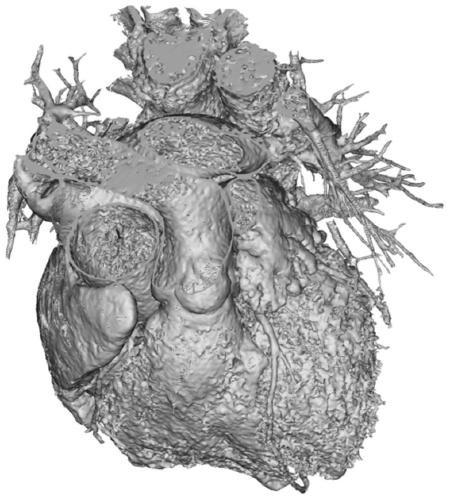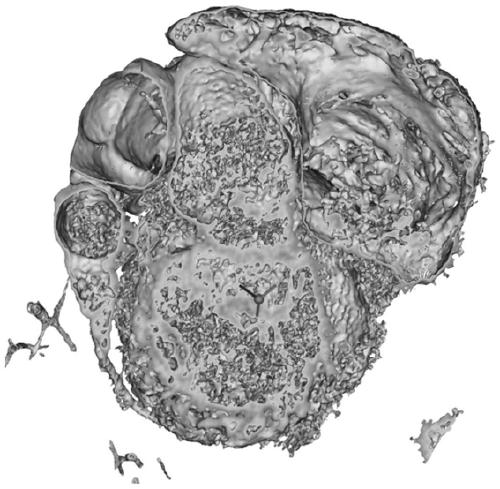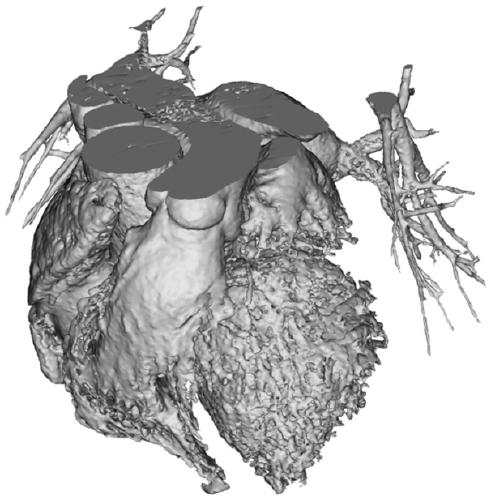3D model construction and preparation method for mitral regurgitation and calcification stenosis
A mitral valve and model technology, applied in the field of 3D printing, can solve problems such as subvalvular structural limitations, and achieve the effect of reducing operation time and radiation intake
- Summary
- Abstract
- Description
- Claims
- Application Information
AI Technical Summary
Problems solved by technology
Method used
Image
Examples
Embodiment 1
[0060] Disclosed in this embodiment is a method for constructing a 3D model for mitral valve disease, which is implemented in the Mimics software using the following steps:
[0061] (1) Use medical imaging equipment to collect data on patients with mitral valve disease (calcified mitral valve stenosis, mitral regurgitation) left heart angiography, mainly collecting the patient's aortic root, part of the ascending aorta, coronary artery and left Atrium, left ventricle, and generate CT (DICOM) files including systole and diastole.
[0062] (2) Import the DICOM file into Mimics software, and generate a .mcs file to save
[0063] (3) Split data:
[0064] Step1, in the Pseudo colors command, according to the different chromatograms displayed by different tissues, observe the structure and boundary of different tissues, calcification, leaflet shape and degree of calcification;
[0065] Step2, CT image playback selects the phase data when the left heart is at its maximum or minimum...
Embodiment 2
[0074] The software selected for printing in this embodiment is OBJET slicing software, and slicing software such as FDM Cura, SLAMaterialise magics, and SLM QuantAM can also be selected.
[0075] This embodiment discloses a method for preparing a 3D model for mitral valve regurgitation and calcified stenosis. On the basis of Embodiment 1, it also includes the following steps:
[0076] Step 1: Use any of the above-mentioned 3D model construction methods for mitral regurgitation and calcification stenosis to obtain a 3D model for mitral regurgitation and calcification stenosis, and export the model as an STL format file;
[0077] Step 2: Import the 3D model into the OBJET slicing software for printing. During the slicing process, the height of the model should be as low as possible to reduce the printing time. After removing the large support on the surface of the model with tools, place the printed 3D model in alkaline Shake and clean in the solution. After cleaning, take the ...
PUM
 Login to View More
Login to View More Abstract
Description
Claims
Application Information
 Login to View More
Login to View More - R&D
- Intellectual Property
- Life Sciences
- Materials
- Tech Scout
- Unparalleled Data Quality
- Higher Quality Content
- 60% Fewer Hallucinations
Browse by: Latest US Patents, China's latest patents, Technical Efficacy Thesaurus, Application Domain, Technology Topic, Popular Technical Reports.
© 2025 PatSnap. All rights reserved.Legal|Privacy policy|Modern Slavery Act Transparency Statement|Sitemap|About US| Contact US: help@patsnap.com



